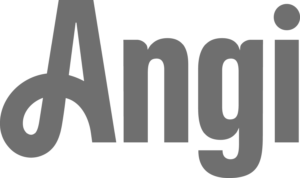Here are the supplies that you will need to clean your roof:
- Ladder
- Non-skid shoes
- Extra-long garden hose
- 4 gallons hot water
- 1 gallon bleach
- 1 cup Trisodium Phosphate (TSP) cleaner
- Bucket
- Garden sprayer
- Start by mixing bleach, hot water, and TSP in a bucket until materials dissolve completely.
- Pour the mixture directly into the garden sprayer.
- Spray cleaning solution onto the roof and allow to sit for 15 minutes.
- If cleaner dries, spray more to keep an area wet until you have finished spraying completely.
- Rinse well with a garden hose and repeat until a roof is clean.
If you still think pressure washing would be a better idea than the manual cleaning listed above, think again. Most roof material manufacturers provide specific recommendations for cleaning solutions made from water, bleach, and TSP.
Roof manufacturers go on to caution against power washing shingles as a cleaning method.
Multiple manufacturers agree in warranty manuals that even the peskiest exterior issue, like algae discoloration, can be removed with a solution made from trisodium phosphate, bleach, and water.
Cleaning with a harsh chemical like TSP should be done with care. It’s important to wear the proper eyewear and protective clothing and keep the chemical away from contact with skin.
When used improperly, TSP could burn unprotected skin and cause serious eye damage.
As an extra step, any shrubbery surrounding a home should be soaked with plain water before using TSP to clean a roof and rinsed well afterward. This will protect healthy trees, bushes, and plants from irreparable chemical damage.
When cleaning a roof, it’s best to embark on the project on a cool, overcast, and humid day. This will keep a cleaning solution from drying too quickly on roofing materials to undercut your hard work.
When using the cleaning directions above, a basic garden sprayer can effectively saturate a roof section at 3’ x 10’.
Since cleaning a roof is slippery and potentially dangerous work, it is recommended to start at the bottom of a roof and work your way up as each lower section is cleaned. This will continually provide you with a dry surface to stand on to reduce the risk of a slip-and-fall accident.
Most homeowners can benefit from wearing a safety harness in basic roof cleaning. It’s never recommended under any circumstance to walk on a wet roof since slipping is a definite danger. Non-skid shoes are always required; rubber-soled shoes provide a better grip than leather shoes.





